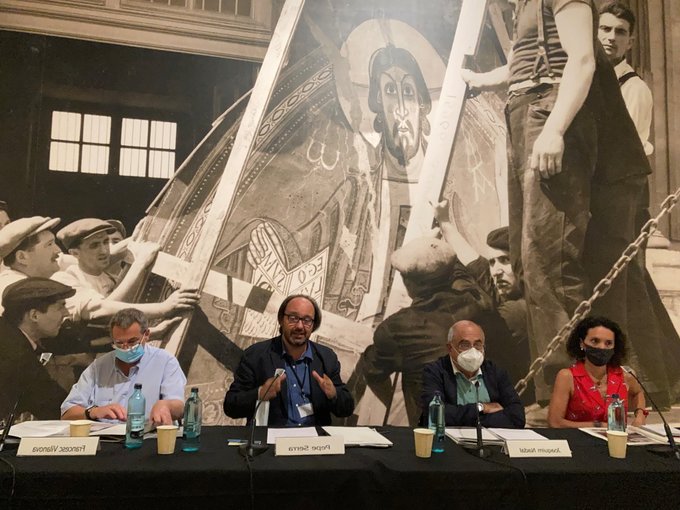Museu en perill! Salvaguarda i endreça de l’art català durant la guerra civil
Museum in danger! Safeguarding and organizing Catalan art during the civil war
Funding entity
National Museum of Art of Catalonia
Description
The National Museum of Art of Catalonia was created in 1934, under the name of Museum of Art of Catalonia, thanks to the impetus of Joaquim Folch i Torres, executor of an ambitious museum plan for Catalonia in the first decades of the 20th century. From the very beginning, this institution housed the great collections of Catalan artistic heritage, from Romanesque to Picasso's oils. However, the coup d'état of 18 July 1936 cut short its projection, as it had been conceived by Folch i Torres. Revolutionary agitation and fascist subversion endangered the integrity of the museum and its collections, along with the entire Catalan artistic heritage, public and private, religious and secular.
Faced with the destruction of the revolution and the danger of fascist bombings, the Catalan authorities responded with an extraordinary task of safeguarding the artistic assets of the entire territory. Beyond the protection of this heritage, the tidying, organization, cataloguing, documentation and restoration of these assets were carried out. This was the culmination of the first public policy of heritage management in contemporary Catalonia, which had an international expression in the exhibition L’art catalan du Xème au XVème siècle in Paris in 1937. The enormous work that was carried out in the art repositories of the entire territory is a testament to the value that was given to culture in times of war and barbarity, and became an international benchmark in terms of safeguarding heritage. This exhibition raises the problem in a general way throughout the Catalan territory —of great scope and complexity—, although it focuses for obvious reasons on the specific circumstances of the collections of the Museu Nacional d’Art de Catalunya. With this exhibition, the museum wants to recognize the work of all those people and entities who were involved in the defense and rescue of heritage in the context of the war. And, among all, to vindicate the personality of Joaquim Folch i Torres, the first director of the museum and an essential figure without whose contribution it would not be possible to understand the current museum wealth of the country.
Museum in danger! combines different exhibition elements: original works, primary documentation, lists, purification files, catalogs and bibliographic volumes, photographs, newspaper archive materials, films, cartography, posters, etc. The visual power of the photographs that are preserved of those transfers and movements stands out, a true treasure that allows us to see the conditions in which those responsible and technicians had to work in order to safeguard and tidy up Catalonia's artistic heritage. All this material will allow the viewer to learn about a surprising historical episode.
Curated by: Mireia Capdevila Candell and Francesc Vilanova Vila-Abadal
With the support of
Instituto Catalán de Investigación en Patrimonio Cultural (ICRPC_CERCA), Fundación Carles Pi i Sunyer, Fundación Folch y Torres y Memorial Democrático.
MORE INFORMATION, AQUÍ
PROGRAMME, AQUÍ
PRESS, AQUÍ

Dr. Joaquim Nadal, director of the ICRPC, participated in the press conference to inaugurate the exhibition "Museum in danger! Safeguarding and tidying up Catalan art during the civil war".




Institut Català de Recerca en
Patrimoni Cultural ICRPC
observatoridepublics@icrpc.cat
Tel. 972 486 158



- Sitemap
- |
- Legal Notice
- |
- Cookies usage
- |
- Privacy policy
- |
- Contact
- |










